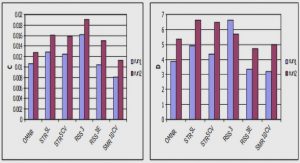Get Complete Project Material File(s) Now! »
Introduction
There are a number of prose works that form part of the larger body of early South African English literature (the Union period, 1910–1948) that have received very little critical attention. These works are set in the geographically specific location of the South African dorp (village or small town). The existence of this body of works came to the attention of the public via the publication of Herman Charles Bosman’s novels, Jacaranda in the Night and Willemsdorp (the latter is a reworking of the former) in 1998 and 2000 respectively. Willemsdorp had been subjected to censorship at the time of first publication because of the writer’s response to the mechanisms of prevailing racist ideology such as the Immorality Act, which resulted in police sadism towards people participating in interracial sexual acts.
Theoretical Orientation
In the introduction to his book, Representing Dissension: Riot, Rebellion and Resistance in the South African English Novel (2003), J. A. Kearney provides useful guidelines for the way historical novels represent history. He proposes that a study of this genre should not aim to determine how closely writers have kept to official historical records, or deviated from them. Rather, it should focus on exploring the imaginative use of such knowledge. He quotes an early reviewer of Sarah Gertrude Millin’s King of the Bastards who expounds what s/he considers the main consideration for the writer of historical novels – that is, the challenge of creating the “illusion of present reality”. The historian, according to the reviewer, documents the facts; the novelist’s task is to envision the human drama responsible for them (xiii: my emphasis).
Biographical Information
To return to the issue of critical neglect, the texts explored here are valuable not only historically (in that they illuminate an important period in South African history), but also for their intrinsic merit (in their individual and collective contributions to the body of South African literature). In an article titled “Stephen Black: some introductory notes”, Stephen Gray groups together historically neglected writers (such as Stephen Black) who have been failed by literary historiography.
Historical Contextualization
Before offering a historical context for the novels selected for this study, it is necessary to focus briefly on some issues and contentions arising from the location of historical novels in their “real” contexts. As mentioned, J. A. Kearney offers some useful comments on this aspect. He quotes Michael Green (1997: 34) as saying: “[Historical novels] enter into a contract with the reader that requires him or her to recognize sequences or events formalized outside the text in question as ‘history’”. Kearney goes on to say that a literary critic who has not undertaken any primary historical investigation must rely for basic information on what has been presented by historians. This, he says, may be problematic in the sense that it is easy to lapse into regarding history as background that can be established securely and authoritatively and, therefore, perhaps to forget that historical texts are themselves representations.
Chapter 1:Introduction
Theoretical orientation
Biographical Information
Historical Contextualization
Chapter 2: The Dorp (1920) by Stephen Black
Stephen Black, South African literary pioneer
The dorp, Unionstad: macrocosmic implications of small-town politics and organization
The Town Council meeting
The General Dealer’s store: the stage where political differences are played out
History touches the dorp: “The miserable business of the Rebellion”
The small town as the cradle of mythmaking: nationalism and religious ideology
The role of the predikant in the dorp
Conclusion: The Ideal
Chapter 3: The Mask (1930) by C. Louis Leipoldt
Historical Contextualization
Introduction
The unmasking of small-town culture
Conclusion
Chapter 4: Too Late the Phalarope (1953) by Alan Paton
Historical Contextualization
Introduction
The small town – the stage of tragedy
Town, location and Paton’s frame narrative
Pieter van Vlaanderen, a tragic hero
Conclusion: Paton’s vision for forgiveness
Chapter 5: Willemsdorp (1998), Herman Charles Bosman’s
dorp satire
Introduction
Willemsdorp as a mirror of society
Conclusion
Chapter 6: Conclusion
Notes
Biblography
GET THE COMPLETE PROJECT
The small-town novel in South African English literature (1910–1948)





